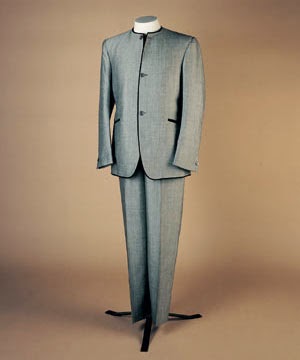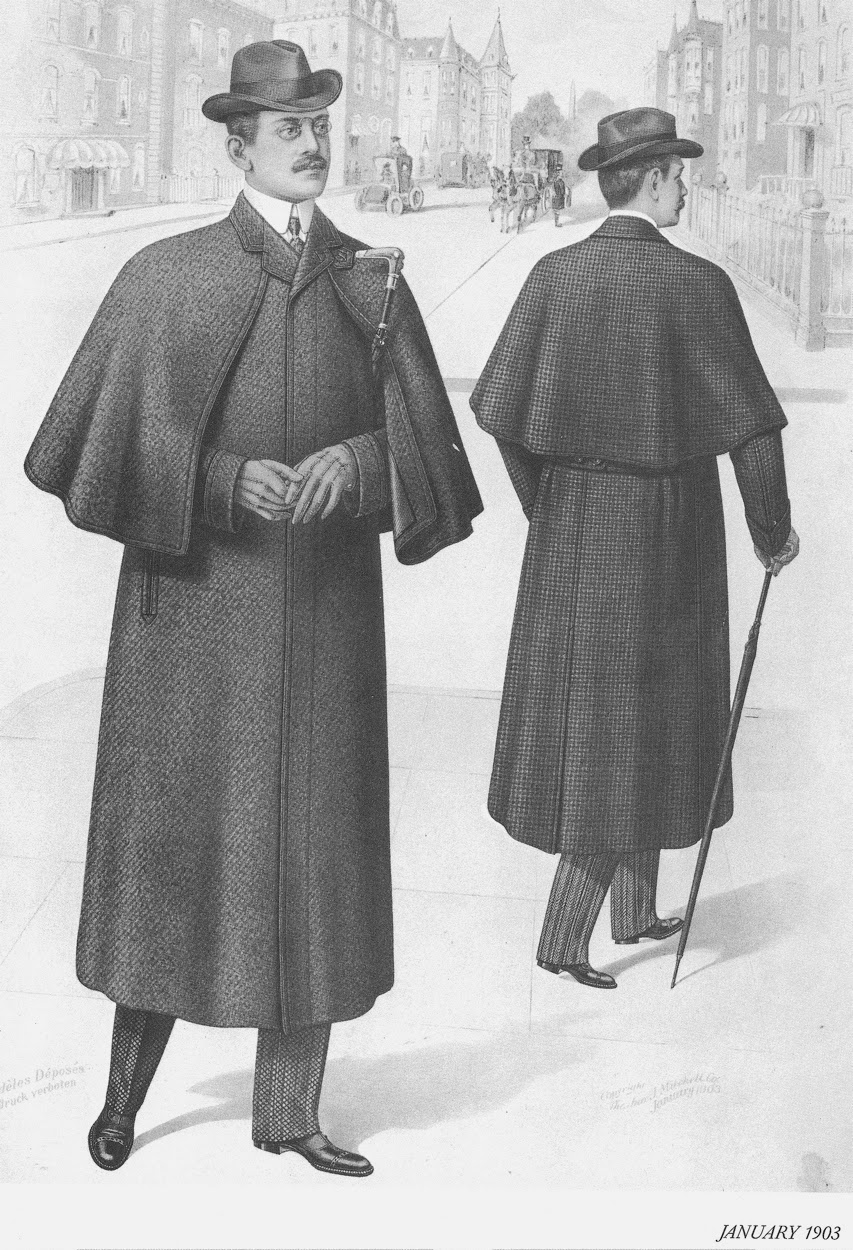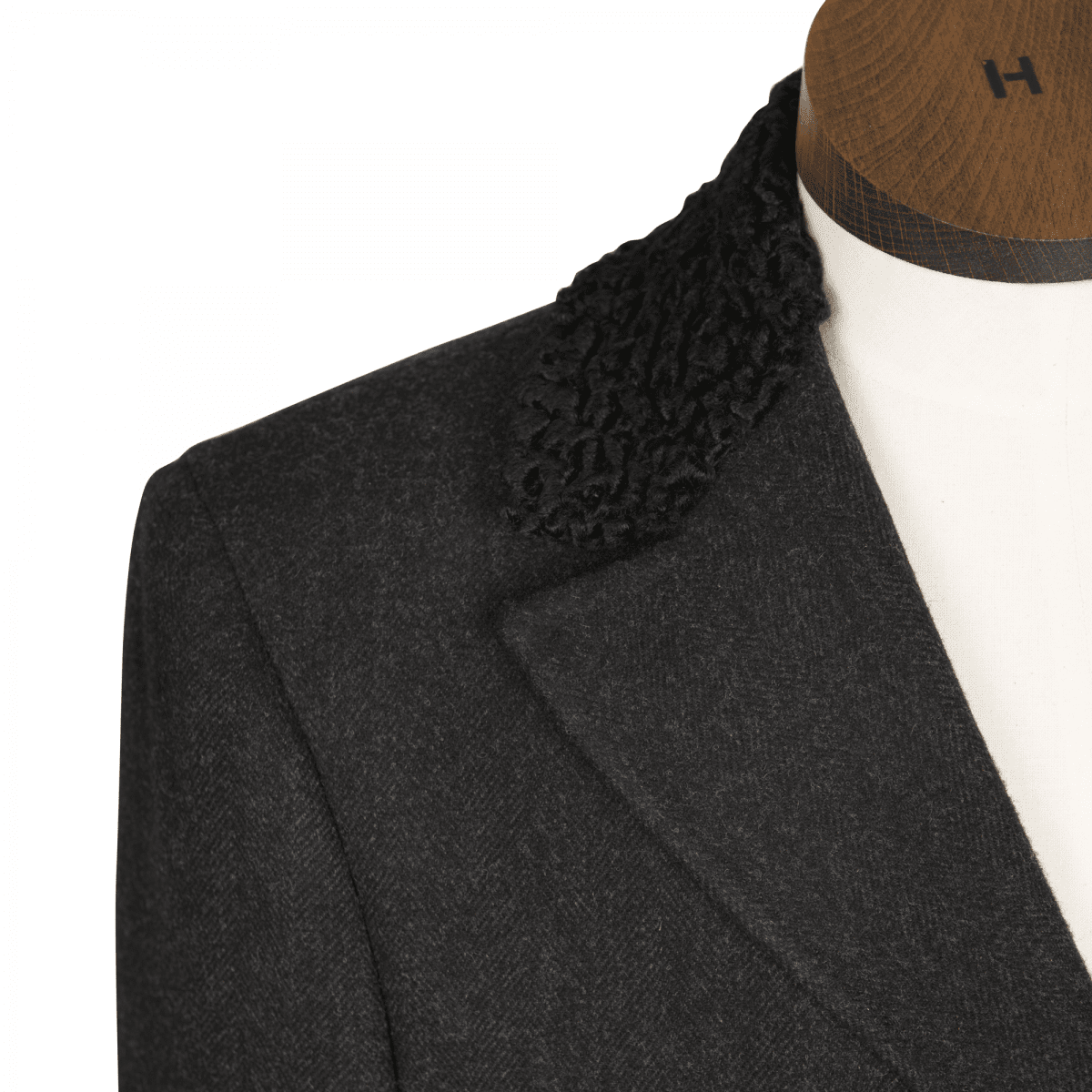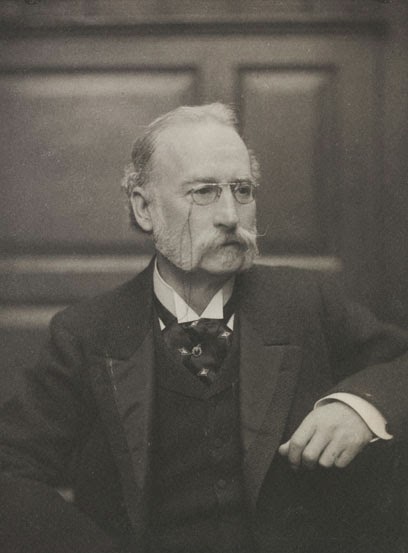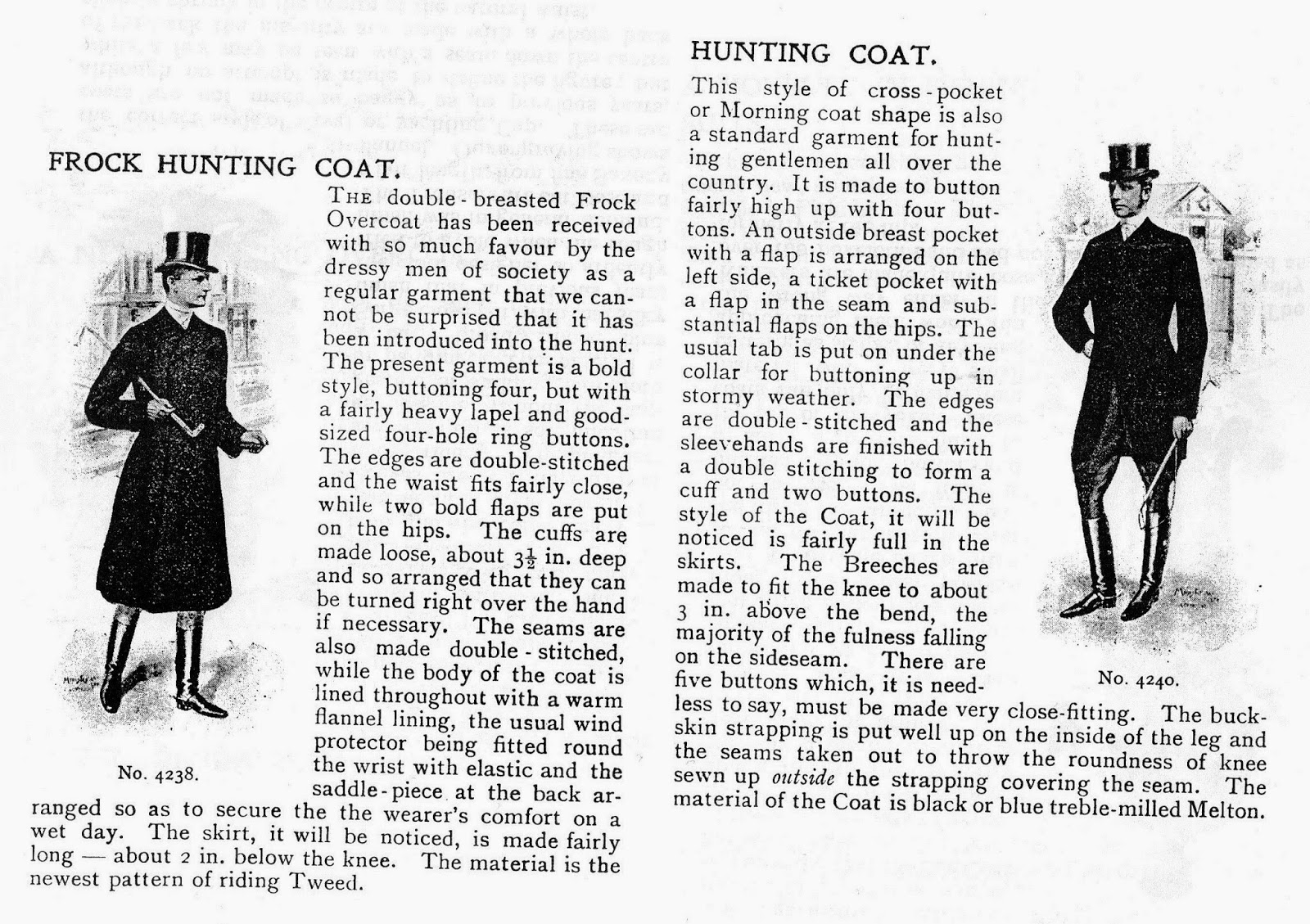1930
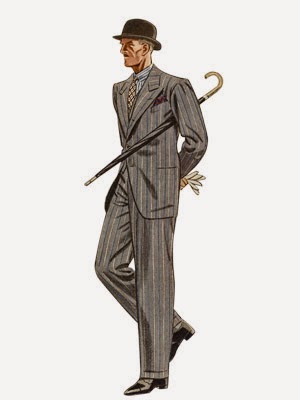
During this decade The
Great Depression set off the trend for a more simple and sensible dress sense. Poor became the look to try and embrace
this turn in fashion. It was at this time that the old traditions and ethical of changing your clothes during the day and night started to end. Everyone from every social back ground had to make a living making social classes a thing of the past.
The serious
of work in the 1930s gave bitch to the business suit, a
development of the lounge suit. Single breasted or double breasted the
suit was dark even the name of the colours matched the times; steel
grey, charcoal grey, slate blue. However to brighten the plainness
herringbone weave, checks and vertical stripes were used.Striped ranged from
single,double, triple stripes, pin stripes or chalk stripes which were
to lengthen the male form and enhance the silhouette. The most stylish of the checks or plaid weaves was Glen Plaid which came from Scottish origins woven in saxony wool. This pattern owed its popularity to the future King Edward VIII.
This check was difficult to work with: in order to allow for any
imperfections in the weave and because the checks had to be matched up
at the seams, three and a half metres of fabrics were required instead
of three. The slightest cutting or fitting error would be obvious so
more time was need to make the perfect suit. This made these suits far
more expensive.

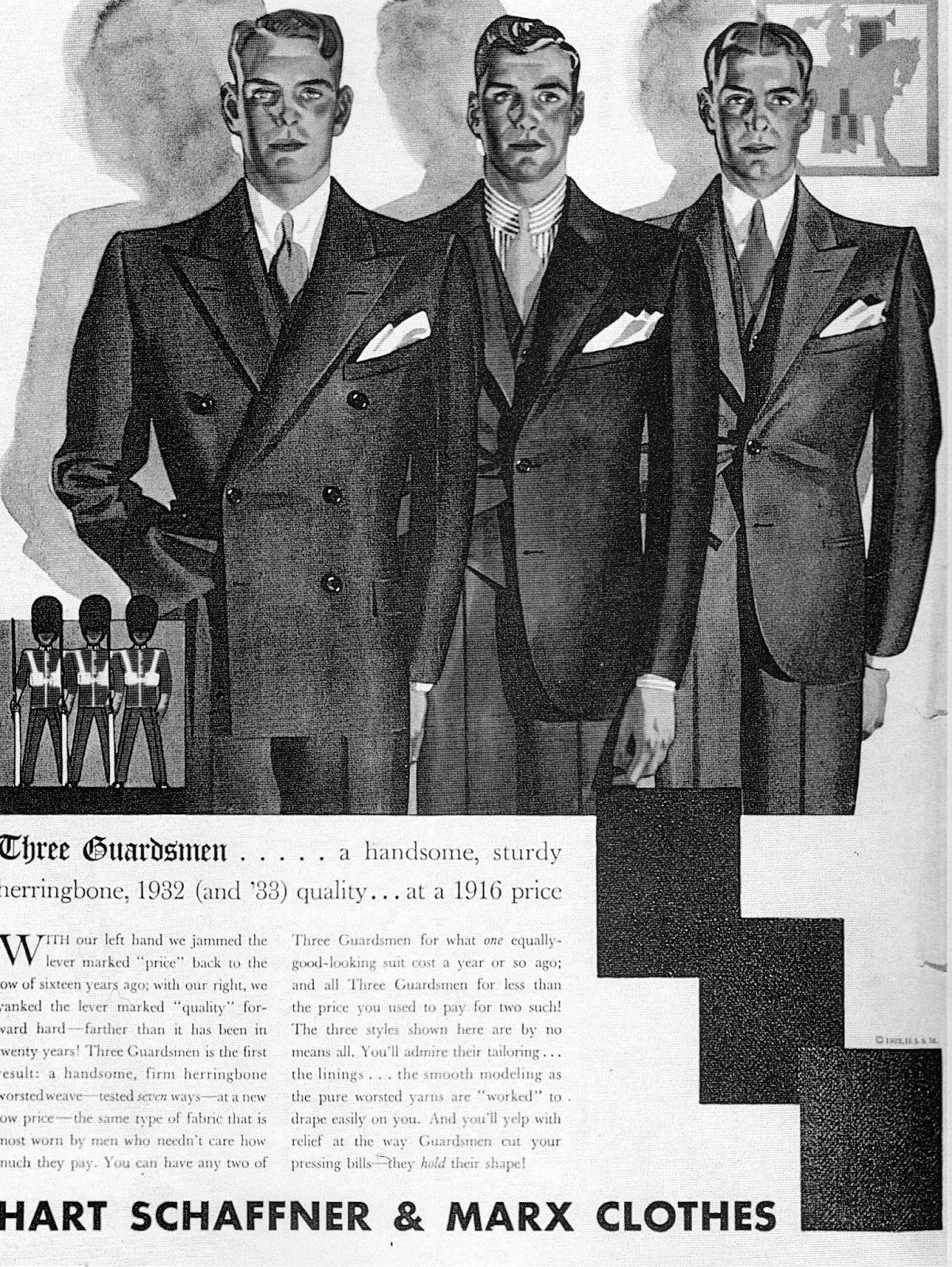
It's also a difficult pattern to
wear as it makes shorter men looks short and only flatters athletic
built men. The 19th century dandies were
http://en.wikipedia.org/wiki/Glen_plaid completely gone and were replaced by a sharp looking business men. A famous men's tailor at this time was Frederick Scholte created a technique known as the 'Drape cute' or the 'London cut'. Scholte was the first London tailor to apply the technique of military uniforms to civilian dress were it had been previously used. The new suit cut was softer and more flexible in construction than the
suits of the previous generation; extra fabric in the shoulder and armscye,
light padding, a slightly nipped waist, and fuller sleeves tapered at
the wrist resulted in a cut with folds, or "drapes," front and back that
created the illusion of the broad-shoulders and tight-waist "V" figure
of the very fit. Great website:-
http://www.gentlemansgazette.com/drape-cut/

Officers greatcoats were wide-shoulders and high-belted while fine horizontal drapes narrowed as they fell from the arms to the waist. This gave birth to the triangle silhouette for men. Broad top half, narrow waist.
Three piece suits were still worn. Men who couldn't achieve the athletic build used shoulder pads, raised arm holes and sleeves which narrowed at the waists to give the illusion of broad shoulders aid to the illusion of broader shoulders. The most useful devices for broadening the chest were peaked or pointed lapels and wearing double breasted jackets. Double breasted jackets started to play a key roll in mens fashion with styles like the pea-jacket or the reefer jacket. The most popular version was large, broad lapels which slopped downwards which accentuated the square-cut shoulders, six buttons (in two rows of three) and fell to straight, vent-less tails which hung at the hips. This became known as the Kent DB and later the Windsor DB. This jacket was often paired with long wide trousers to make wears look taller. This was when zips came into play in the manufacturing of trousers instead of luggage. Button flies survived through the second World War but zippers spread to sweaters and jackets and were often used to decorate instead of practical use.
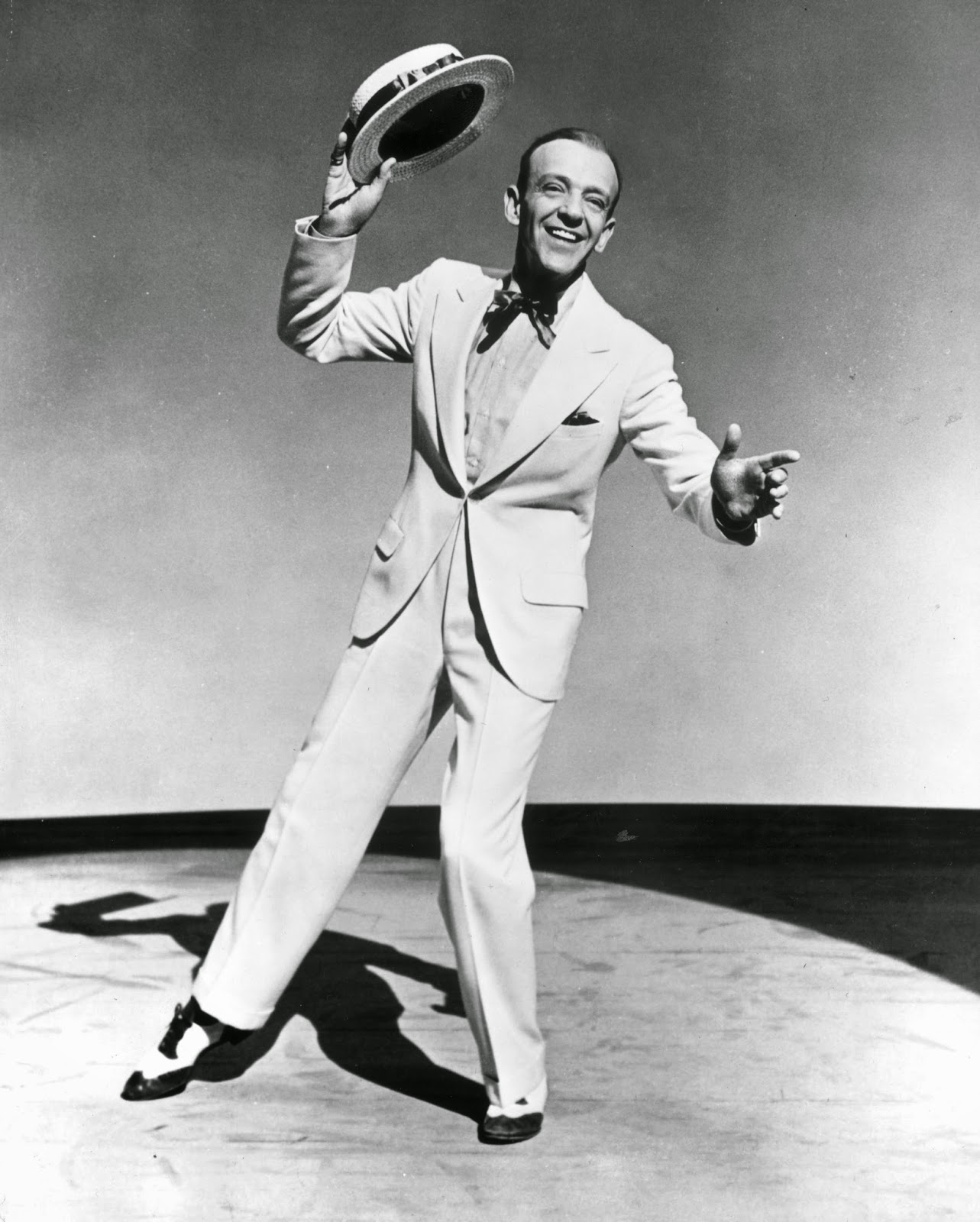

The beginning of the Hollywood film industry. Male actors were expected to provide their own wardrobes. In some instances contracts stipulated that the studios own tailors were to be used while the leading male stars were allowed to commission their own tailors and offset the costs against the studios' expenses. The result the clothes worn on-screen had an 'immediacy' in terms of fashion that could be admired and emulated by their fans. Shoulders were extra padded to make men seem even wider and heads appear smaller. In the case of Astaire he had his new clothes throw at a wall several times to 'knock out' the newness to create his casual elegance look. At the other end of the scale was James Stewart's informal look of V-neck sweater and cuffed pants was to become standard dress. One of the styles which was not greeted warmly by high society was the gangster look. Paul Munis portray of a bootlegging gangster sparked the look of a double breasted suit with exaggerated lapels and hat pulled down was popular with workmen and young. It was the first time lower classes were not following the dress patterns set by upper class role models. This revolt against 'good taste' was to be halted by the start of the Second World War. This thread wouldn't be picked up again until the 1950s for a revolt on style.
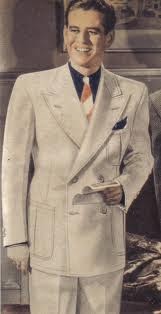
This was the time when holidays and going to resorts started to become popular thanks film. People seeing celebs in summer sun. one of the iconic outfits of this movement was the 'Palm Beach suit'. The jacket of this look could be both single or double breasted but instead of the business peacked lapel the Palm Beach had open-notched lapels or the America Lapel. It's success was thanks to the fabric they were constructed in which was lightweight fabrics like seersucker (puckered cotton imported from India), shantung (expensive Chinese wild silk) and linen. These fabrics were preferred over much more approbate synthetics fabric which wouldn't crease as easily. These jackets were worn with wide beach slacks or Bermuda shorts and Norwegian slippers were worn on foot also known as Loafers. With the breakout of the Second World War mens fashion was put on hold.
Good guide:-
http://mens-fashion.lovetoknow.com/Fashion_of_the_1930s
Fabric:-
http://en.wikipedia.org/wiki/Seersucker
http://en.wikipedia.org/wiki/Shantung_%28fabric%29
References:-
Men's Fashion in the Twentieth Century from Frock coats to Intelligent Fibres by Maria Costantino
http://www.esquire.com/style/style-evolution-0908#slide-4
http://mens-fashion.lovetoknow.com/Fashion_of_the_1930s
http://en.wikipedia.org/wiki/History_of_suits
http://en.wikipedia.org/wiki/Collar_%28clothing%29
http://lifestyle.howstuffworks.com/style/fashion/trends-looks/100-years-of-mens-fashion.htm#page=3
http://en.wikipedia.org/wiki/Drape_suit
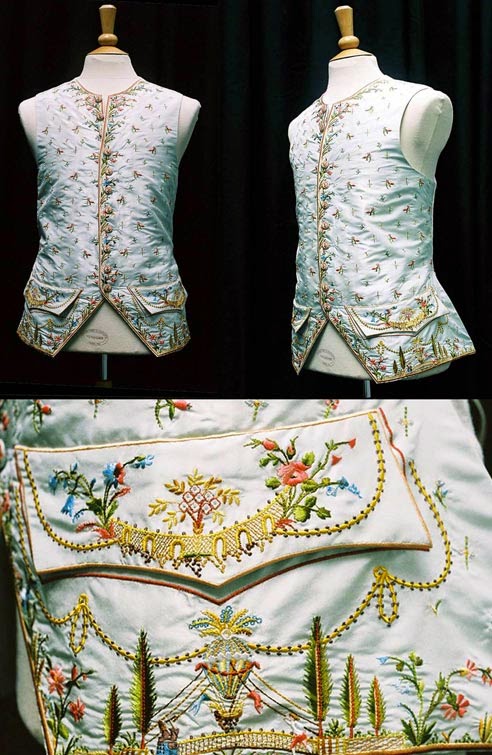 I was going to write and in dept study for construction of both styles of waistcoat however I have found some amazing blogs and websites which I was going to use as a reference however they cover it beautiful with wonderful pictures covered the construction extremely well.
I was going to write and in dept study for construction of both styles of waistcoat however I have found some amazing blogs and websites which I was going to use as a reference however they cover it beautiful with wonderful pictures covered the construction extremely well.
